


Chess News


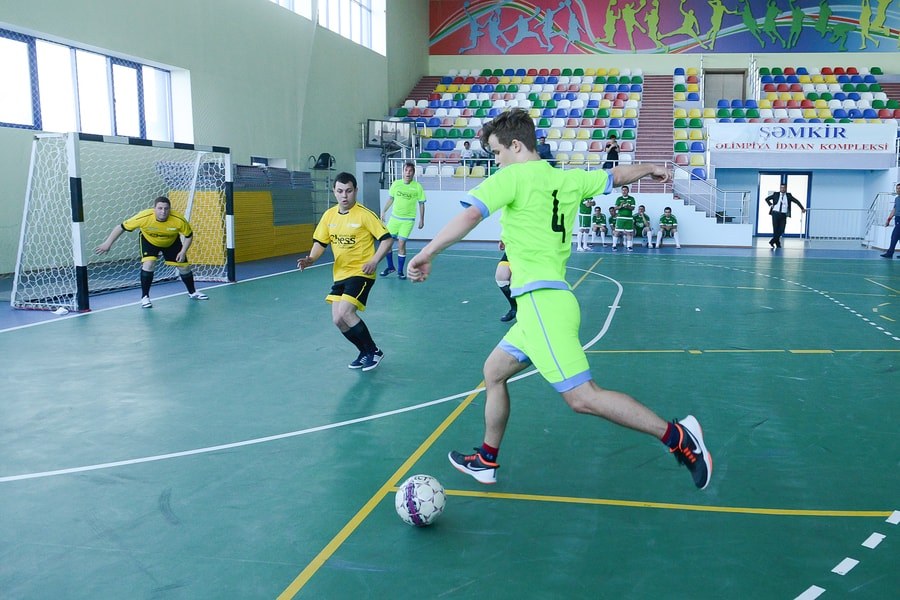


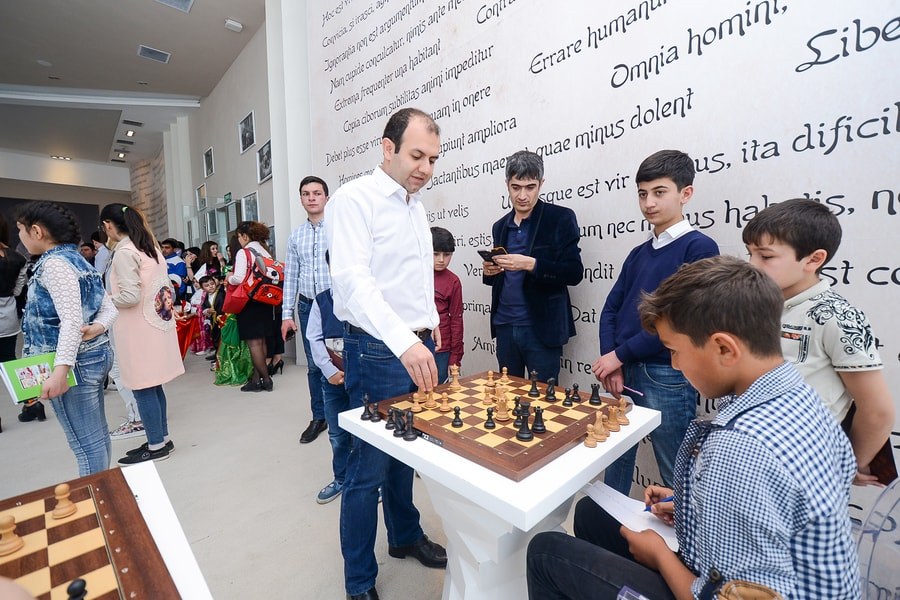

On the rest day, the players of the Vugar Gashimov Memorial in Shamkir traditionally spend part of the afternoon on an excursion. Magnus Carlsen's affinity for all sports activities is well-known and, if possible, he prefers a football game. There was a friendly competition between an international selection and an Azerbaijani team. In the end, the hosts politely gave the guests the victory.
After the football match, players adjourned to a youth education centre and here the chess stars showed their skills in a sporty simultaneous.
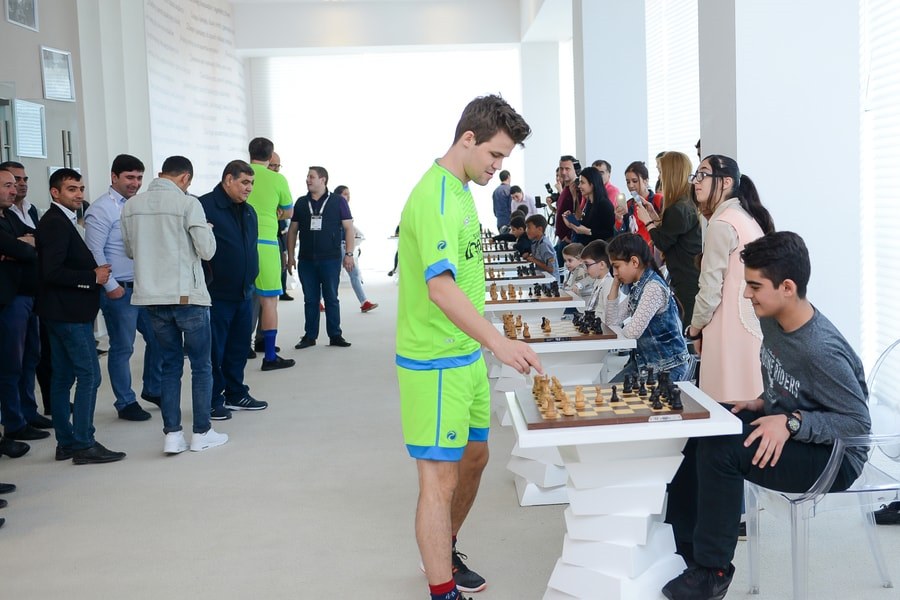
A simul in football uniform
On Thursday, however, it was back to business and Carlsen's brief stint as Veselin Topalov's teammate was over. The tournament leader Topalov, as the only player with two wins, had to defend with the black pieces against Carlsen. The World Champion started with the English opening and then continued with a rarely seen variation, most recently tried by Argentinian GM Sandro Mareco at the Dubai open a few weeks ago. He played 4.e3 and met 4...Bb4 with Qc2 but after the exchange on c3 recaptured with the b-pawn.
From move 10 on, the two players were travelling on unexplored terrain. The result was a structure with largely fixed pawns, heavy a bishop and heavy pieces each in which White had some space advantage, but nothing clearly tangible. GM Daniel Fernandez goes through the game in full:
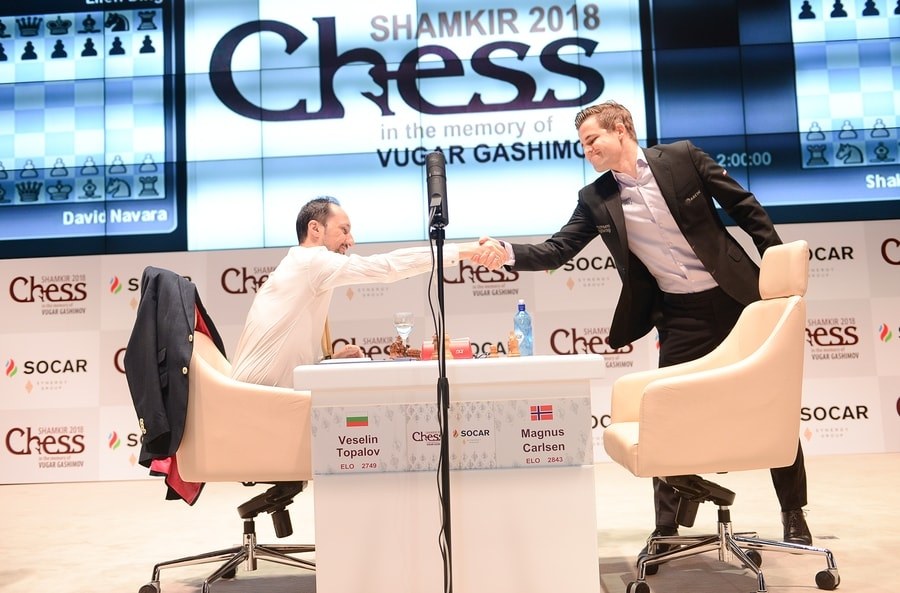
Topalov vs Carlsen | Photo: ShamkirChess.az
Ding Liren scored his first win in Shamkir after a string of six draw. In an anti-Marshall variation of the Ruy Lopez against Navara, Black took over in the middle game, gradually gaining the initiative and tripped up Navara who underestimated the consequences of 33...b4.
White had to take and after 34...Nd3 there were many ugly threats.
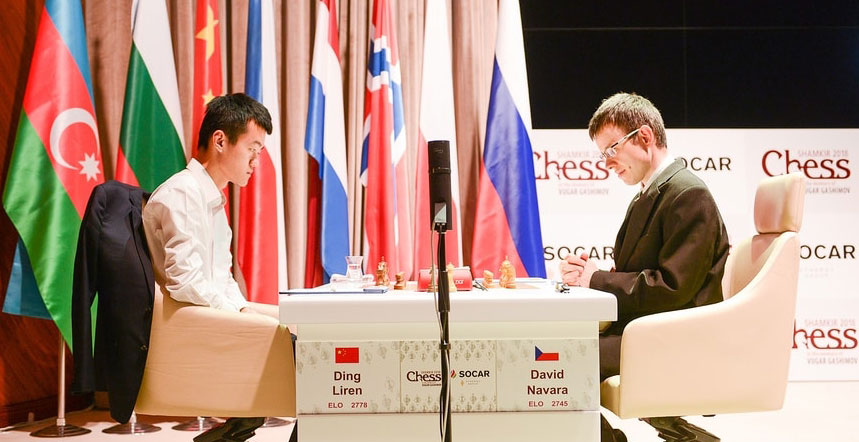
The Czech number one has now "long-castled" (with three consecutive losses) and slipped to last place | Photo: Shamkirchess.az
The seventh round brought the Azerbaijani derby today, with the game Mamedyarov-Radjabov. Against Radjabov's Grunfeld defence, Mamedyarov picked a double-fianchetto variant in which he received hanging pawns in the centre. However, Radjabov eased the tension in the centre pretty quickly and eventually the game ended in a knight vs bishop with symmetrical pawns.
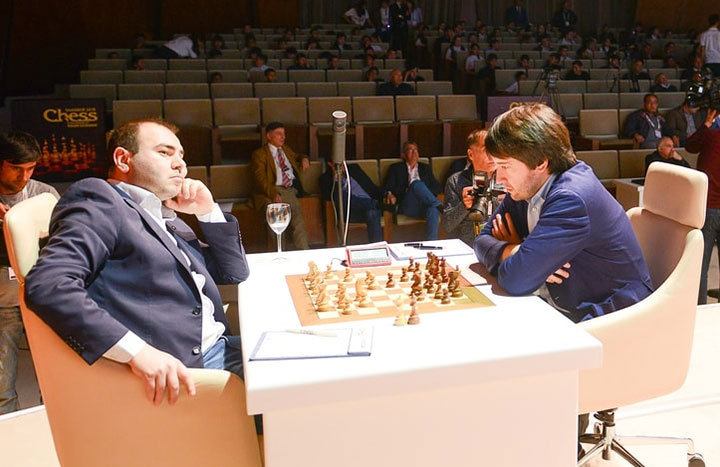
Mamedyarov and Radjabov have not played a decisive game since 2010 | Photo: Shamkirchess.az
Radoslaw Wojtaszek pursued a Catalan opening against Sergey Karjakin, a variation in which Anish Giri played earlier this year in Wijk aan Zee against Karjakin. After an early queen exchange, White kept a certain development advantage. Karjakin declined a repetition and apparently played the endgame for a win.
In the game between Rauf Mamedov and Anish Giri, the Azerbaijani, who's celebrated his 30th birthday, fought his opponent's Petroff defence with a newly fashionable line, 5.Bd3, followed by c3, Bc2 and d4. During the middlegame, the game morphed into a kind of Benoni structure.
The position gradually levelled and Rauf Mamedov scored his seventh draw in seven tries.